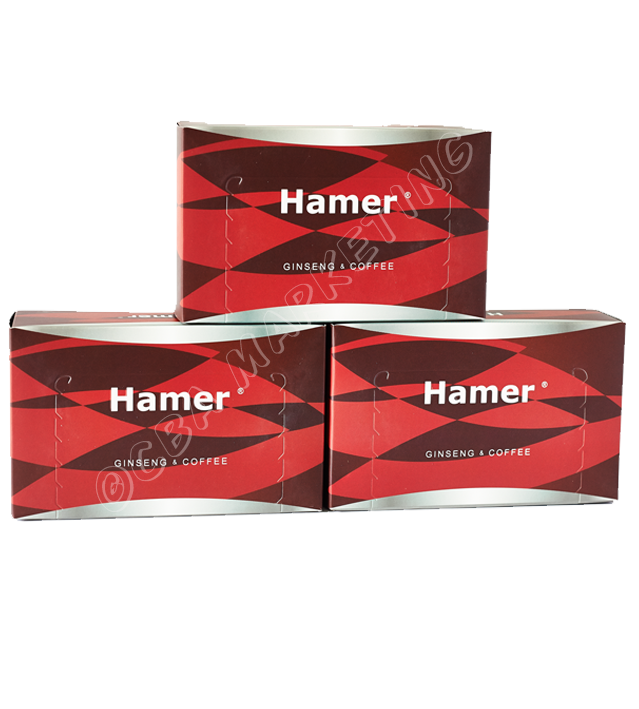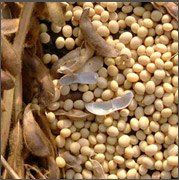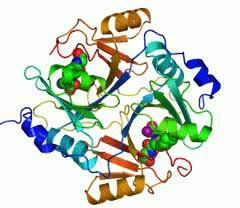top of page

HAMER GINSENG & COFFEE
GALLERY
INGREDIENTS
Ginseng is any one of eleven distinct species of slow-growing perennial plants with fleshy roots, belonging to the Panax
genus in the family Araliaceae. It grows in the Northern Hemisphere in eastern Asia (mostly northern China, Korea, and
eastern Siberia), typically in cooler climates; Panax vietnamensis, discovered in Vietnam, is the southernmost ginseng found. Panax ginsengs, which are the adaptogenic herbs, principally Panax ginseng and P. quinquefolius.
Hydrolyzed protein is protein that has been hydrolyzed or broken down into its component amino acids. While there are many means of achieving this, two of the most common are prolonged boiling in a strong acid (acid-HVP) or strong base or using an enzyme such as the pancreatic protease enzyme to stimulate the naturally-occurring hydrolytic process.
According to the U.S. Department of Agriculture's Food Safety and Inspection Service, hydrolyzed protein is a vegetable source of taste and flavor also called bouillon. The USDA states that "[t]he chemical breakdown of proteins may result in the formation of free glutamate like in meat it joins with free sodium to form a natural source of glutamic acid in food." When added this way, American law does not require the labels to list MSG as an ingredient.
A pomegranate (Punica granatum) is a fruit-bearing deciduous shrub or small tree growing between five and eight meters tall. The pomegranate is mostly native to the Iranian Plateau and the Himalayas in north Pakistan and Northern India. It has been cultivated in the Caucasus since ancient times, and today, is widely cultivated throughout Iran, Armenia, Azerbaijan, Afghanistan, India, Pakistan, Bangladesh, Iraq, Egypt, China, Burma, Saudi Arabia, Israel, the drier parts of southeast Asia, the Mediterranean region of Southern Europe, and tropical Africa. Introduced into Latin America and California by Spanish settlers in 1769, pomegranate is now cultivated in parts of California and Arizona for juice production.
In the Northern Hemisphere, the fruit is typically in season from September to February.In the Southern Hemisphere, it is in season from March to May.
The pomegranate is a very ancient fruit, mentioned in the Homeric Hymns and the Book of Exodus.Yet, it has still to reach mainstream prominence in the commercial markets of North America and the Western Hemisphere.
Malt extract's applications are numerous in the food & beverage industry. Indeed, malt extract is more and more often used in candies, bakery products, sauces and the brewing industry. It's also used in the pharmaceutical industry and dairies. Malt extract from high diastatic malt is used as a natural source of alpha and beta amylase, betaglucanase, and other enzymes mostly used in the baking industry.
There are multiple advantages for the consumer. Malt extract and colourant are natural, healthy and are not obtained from genetically modified raw materials.
Enzymes are proteins that catalyze (i.e., increase or decrease the rates of) chemical reactions.In enzymatic reactions, the molecules at the beginning of the process are called substrates, and they are converted into different molecules, called the products. Almost all processes in a biological cell need enzymes to occur at significant rates. Since enzymes are selective for their substrates and speed up only a few reactions from among many possibilities, the set of enzymes made in a cell determines which metabolic pathways occur in that cell.
Like all catalysts, enzymes work by lowering the activation energy (Ea‡) for a reaction, thus dramatically increasing the rate of the reaction. As a result, products are formed faster and reactions reach their equilibrium state more rapidly.
Coffee is a brewed drink prepared from roasted seeds, called coffee beans, of the coffee plant. They are seeds of coffee cherries that grow on trees in over 70 countries, cultivated primarily in Latin America, Southeast Asia, and Africa. Green unroasted coffee is one of the most traded agricultural commodities in the world. Due to its caffeine content, coffee often has a stimulating effect on humans. Today, coffee is the third most popular drink in the world, behind water and tea.
Brown sugar is a sucrose sugar product with a distinctive brown color due to the presence of molasses. It is either an unrefined or partially refined soft sugar consisting of sugar crystals with some residual molasses content, or it is produced by the addition of molasses to refined white sugar.
Brown sugar contains from 3.5% molasses (light brown sugar) to 6.5% molasses (dark brown sugar). The product is naturally moist from the hygroscopic nature of the molasses and is often labelled as "soft." The product may undergo processing to give a product that flows better for industrial handling. The addition of dyes and/or other chemicals may be permitted in some areas or for industrial products. Particle size is variable but generally less than granulated white sugar. Products for industrial use (e.g. the industrial production of cakes) may be based on caster sugar which has crystals of approximately 0.35 mm.
I'm a paragraph. Click here to add your own text and edit me. It’s easy. Just click “Edit Text” or double click me and you can start adding your own content and make changes to the font. Feel free to drag and drop me anywhere you like on your page. I’m a great place for you to tell a story and let your users know a little more about you.

songaria.jpg

brownsugar.jpg

ginseng.jpg

malt.jpg

Hydrolised+Protein.jpg

Pomegranade.jpg

enzymes.jpg

coffee.jpg

stroke.1.jpg
bottom of page